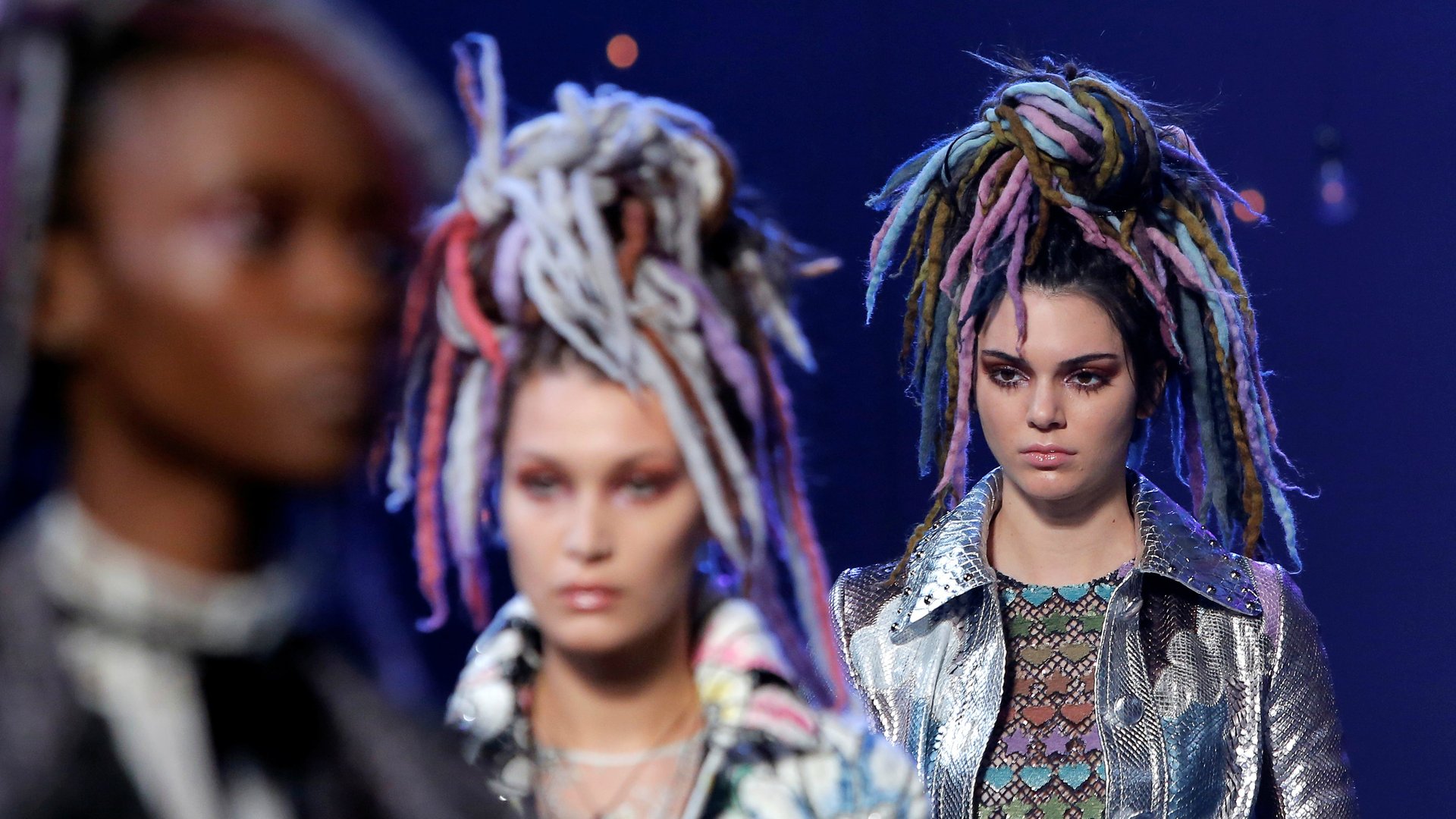The rainbow dreadlocks on Marc Jacobs’ runway have reopened the Pandora’s Box of cultural appropriation
On September 15, Marc Jacobs closed out New York Fashion Week with a grand finale of a show. A troupe of models marched the runway in pastel satin hotpants, metallic bouffant sleeves, and vertiginous Ziggy Stardust platforms.


On September 15, Marc Jacobs closed out New York Fashion Week with a grand finale of a show. A troupe of models marched the runway in pastel satin hotpants, metallic bouffant sleeves, and vertiginous Ziggy Stardust platforms.
I was nervous about what was on the models’ feet—surely someone was going to crash to the ground!—but others were alarmed by what was on their heads: piles of faux wool dreadlocks in shades ranging from platinum and pastels to plummy purples, mustard, and olive green.
The response on social media was swift, accusing Jacobs of cultural appropriation, which it most certainly was.
And Jacobs’ response served to exacerbate the outrage: First he defended his putting dreads on white women by comparing it to black women straightening their hair. (Several pointed out that the former would be considered appropriation, the latter assimilation.) Then he claimed, “I don’t see color or race,” infuriating many.
Jacobs cited his influences for the collection, which included Harajuku girls, Boy George, ravers, and the film director Lana Wachowski, who has appeared in his ads wearing pastel dreads in the past.
One problem for many was that neither Jacobs nor his hairstylist, Guido Palau, acknowledged the hairstyle’s origins in Africa. While it’s plausible that neither Jacobs nor Palau associates dreads specifically with people of color, that’s problematic.
Backstage at Marc Jacobs, when Linda Wells of the Cut asked Palau about the hairstyle—made of wool by an Etsy seller in Florida, by the way—he too cited a cross-cultural mishmash. But when Wells asked whether Rastafarian culture influenced the style, he simply replied: “No, not at all.” This came off sounding either racist—that he wouldn’t want to acknowledge such an influence—or ignorant, since there’s no way the hairstyle would have the resonance it does without Rasta culture. (Both Valentino and Jacobs have also shown Bantu knots, an African style that made its way into 1990s pop culture on Bjork’s head, in their shows.)
The hairstyle resurfaced controversies we’ve seen play out in past seasons on the runway. Last year, Valentino sent out models wearing cornrows and a collection the designers said was heavily influenced by Africa. “The message is tolerance,” designer Pierpaolo Piccioli told Vogue, “and the beauty that comes out of cross-cultural expression.”
The problem at Valentino was that the models carrying that tolerant, cross-cultural expression onto the runway were overwhelmingly white. (The models at Marc Jacobs were no United Nations, but they weren’t quite so racially uniform as the cast at Valentino.)
Before I read about the dreads, I didn’t find them particularly problematic. I actually saw the influences Jacobs cited. To me the show looked like Tank Girl-meets-My Little Pony at a rave. But Jacobs’ reactions on social media made him hard to defend.
As I’ve written before, in the 21st century, cultural appropriation is as inevitable as globalization. The internet has provided us with easy access to multiple cultures—or at least their images, music, and artwork—with the push of a button.
Jacobs was clearly influenced by cultures other than his own, as he and countless other fashion designers are each season. Appropriating elements from other cultures is not—in itself—problematic. But it’s wise to step carefully and thoughtfully when doing so—and to give credit where its due.
It’s difficult to imagine this conversation gaining such force and momentum a decade ago. The internet has opened up the formerly cloistered community of high fashion to the iPhone-wielding masses, and with social media, given us a place to discuss what we see there. But as social media provides us this platform, it also offers a handy one for knee-jerk reactions, as Jacobs’ response to his critics demonstrated.
As hundreds of outraged comments have gathered below Jacobs’ posts of his show, the incident has offered a reminder that fashion no longer operates in an elite bubble, shielded by exclusivity from the eyes of a mass audience. Today, a designer’s audience goes far beyond the runway. Fashion is mass culture now—and it can’t borrow from it without itself becoming part of the conversation.